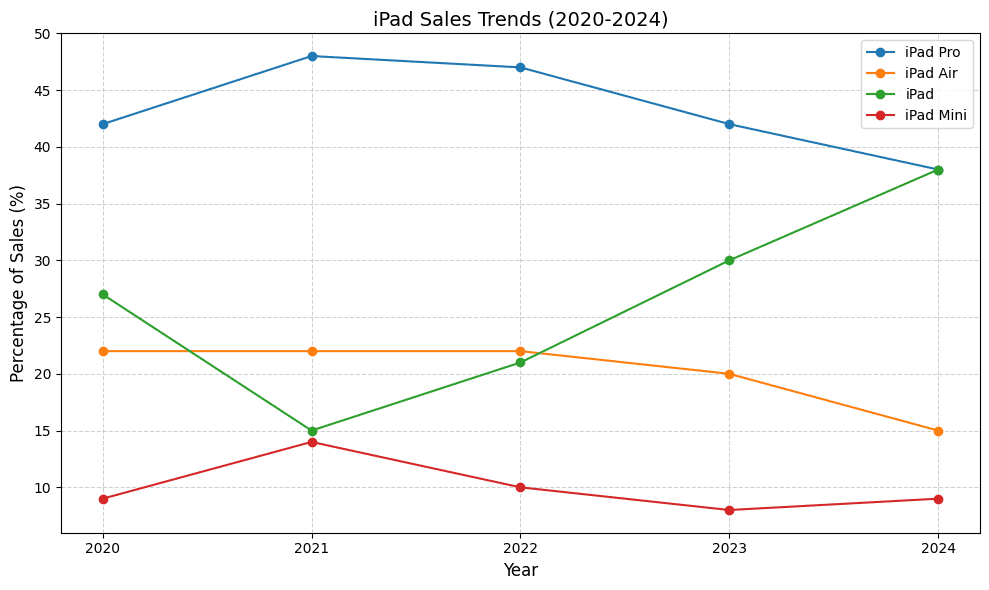Apple is known for its distinct approach to product design and marketing, standing apart from other electronics companies. While many brands follow the “good, better, best” model in their product line-ups, Apple’s strategy often sees its “best” options dominating sales. This trend is evident in its iPhone and Mac ranges and applies to iPads as well, albeit with some variations.
Over the past five years, Apple has sold four iPad models: the basic iPad, iPad mini, iPad Air, and iPad Pro. Each model caters to different price points and use cases. The iPad Pro has consistently been the top seller, accounting for 38–48% of U.S. sales annually since 2020. However, 2024 saw an unexpected rise in the popularity of the basic iPad, which matched the Pro’s share at 38%. This could mean a probable increase in demand for more affordable options among buyers.

The iPad Air occupies a middle ground in terms of pricing and features but has struggled to gain traction. Its share has hovered around 20% over five years, dropping to 15% in 2024. Meanwhile, the iPad mini remains a niche product with the smallest share—9% in 2024—due to its compact form factor.
Apple’s pricing strategy plays an important role here. Even its lowest-priced products are positioned above competitors’ entry-level prices. Despite this premium positioning, Apple users often gravitate toward its top-tier models. This behavior highlights Apple’s strong brand appeal and effective marketing.
The rise in basic iPad sales last year raises questions about whether this trend will continue or if it was a one-off occurrence. As Apple continues to refine its product offerings, it will be interesting to see how consumer preferences evolve across its iPad lineup.
More here.
